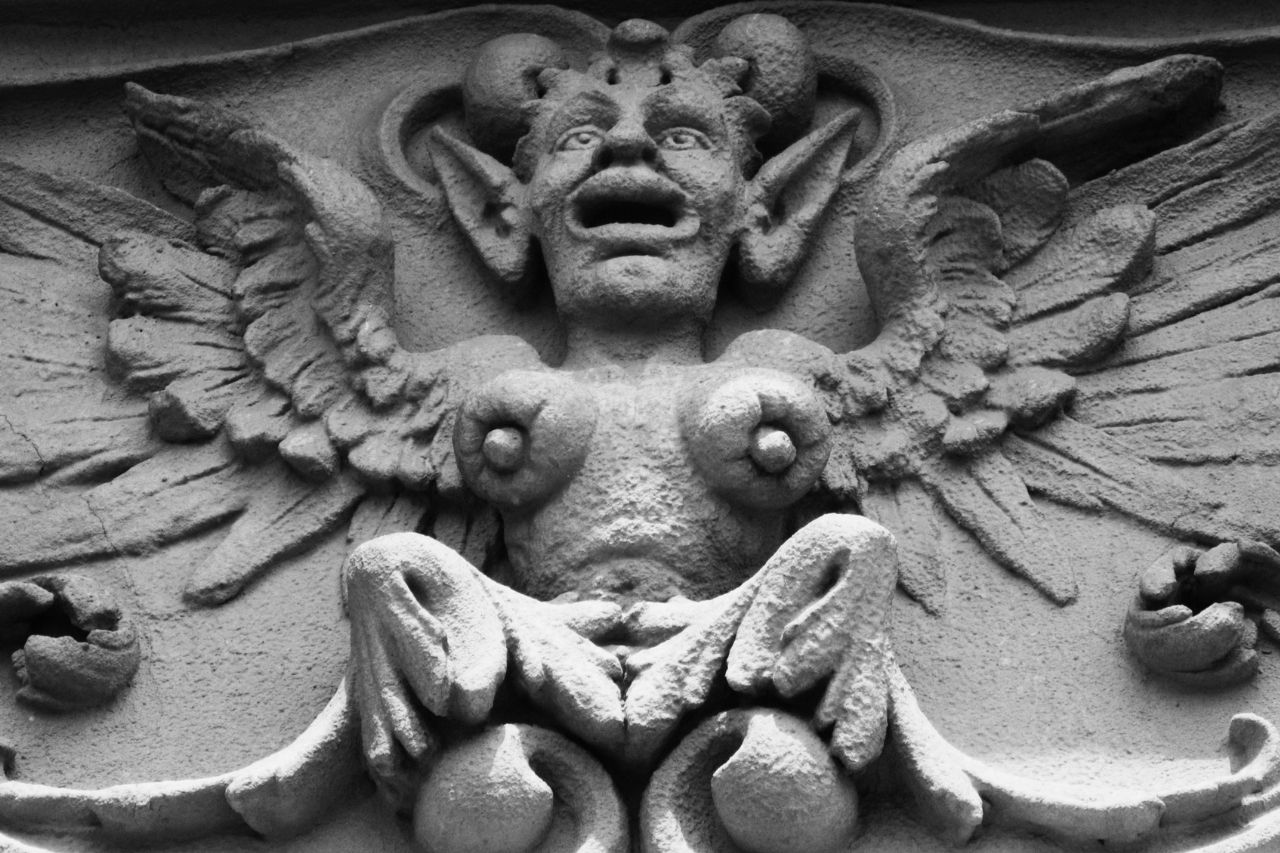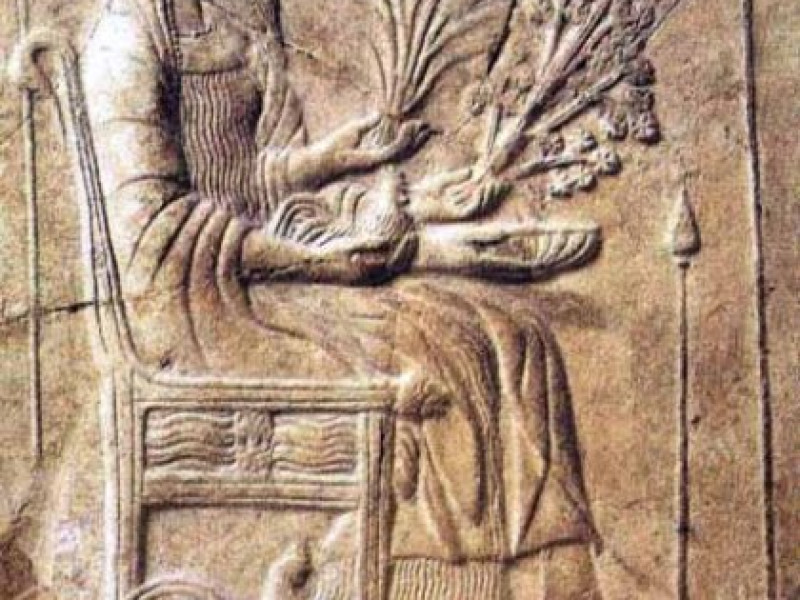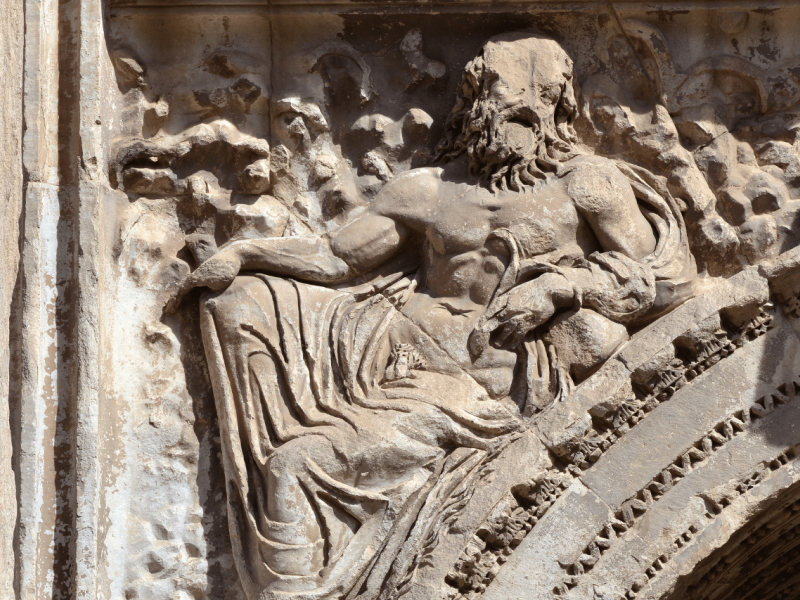Hades
Hades: The Anti-Social Introvert of Greek Mythology
Hades, god of the underworld, was one of the original six Olympian gods, but he rarely left the realm of the dead. However, he was not the fearsome, terrible character described by Christians and modern popular fiction. Instead of a devilish beast who delighted in punishing souls, Hades was more like the shy manager of a quirky apartment building where the residents never left.
Who Is Hades in Greek Mythology?
In Greece, Hades was called the Other Zeus, or the Infernal Zeus, since he embodied the opposite qualities of his brother. He was also known as the Attractor of Man since eventually, all humans would enter his gates.
Hades was the god of the underworld, which was more than people often realize. This meant that anything in the chthonic realm, or under the surface of the earth, was his responsibility. He was the god of wealth because gems and precious metals all originated in his territory. Root vegetables also flourish underground, and therefore Hades sometimes appeared as a fertility god, carrying a cornucopia.
Hades’ most well-known epithet by far is King of the Realm of the Dead. He was so much a part of that kingdom that it too became known as Hades. Despite popular opinion, his area of influence included all dead souls, not only those deserving of punishment. The realm of “Hades” included regions equivalent to Heaven, Hell, and Purgatory.
What Is Hades Known For?
Hades' personality was somewhat stern and quiet, and he preferred to spend his time in the underworld. Seneca, the Roman poet, described his appearance as “the look of Jove when he thunders.” Though he was not a malevolent god, he sometimes enjoyed the fear and intimidation his job engendered.
Not many Greeks actively worshipped Hades, fearing that even mentioning his name would bring about their own deaths. There was one cult of Hades at Thesprotia, where there was an Oracle of the Dead. At his temple at Elis, the priest was the only one to enter the temple, and he entered just once a year to leave Hades offerings of black animals. Pylos was another city associated with Hades, for it was considered the gate of the setting sun.
In Roman mythology, Hades was known as Pluto, and he was viewed less negatively. Still, the dwarf planet that received his name is far from the other planets in our solar system, which seems fitting for a god who kept himself at a distance.
What Was Hades’ Symbol?
Since the Greeks were afraid to mention Hades much, he seldom appeared in artistic representations, and there was no fixed age or physical description used. Mostly, his likeness was found on Archaic pottery, where he was shown as a stately middle-aged figure with a dark beard, sitting on an ebony throne. He carried a bident, which was also a favored symbol of the Indian god of death and renewal, Shiva.
Besides the bident, Hades carried a key which he used to lock the gates of the underworld. He also often wore the Helm of Darkness, made by his nephew, Hephaestus.
Likely the most recognized symbol connected with Hades is the three-headed dog, Cerberus. Even when the gates of the underworld opened to admit newly deceased souls, Cerberus prevented the resident souls from escaping. As fearsome as the beast might seem, the word Cerberus is akin to the early Indo-European word Kerberos, which means spotted. Therefore, the terrifying god Hades had a dog named Spot.
In addition to Cerberus, Hades also favored the owl and the snake. He held cypress and poplar trees in high regard, as well as the narcissus flower.
What Was the Realm of the Dead Really Like?
Hades’ fearsome reputation came from his association with death, judgment, and “hell.” However, Thanatos was the god of death, and the three sons of Zeus were the judges. All Hades did was ensure that the dead obeyed the rules of the underworld and that they never left. When the dead checked into the Hades Hotel, they never checked out.
Only a few of the noblest or most heroic souls went to Elysium, a blessed island of luxury and reward. Similarly, Tartarus’ dark and torturous abyss was reserved for those who committed truly vile and heinous deeds. Most of the dead occupied the Asphodel Meadows, where they simply continued to exist. The worst the average Greek had to face was monotony and ennui.
How Was Hades Born?
The origin of Hades and his siblings is the foundational myth for all of the Olympian pantheon. Their story began after the Titan Cronus betrayed and defeated his father, Uranus, and became the supreme ruler. Unfortunately, Cronus heard a prophecy that he would suffer his father’s fate. The idea obsessed him, even unto madness.
Rhea brought Cronus their firstborn child, Hestia. Opening his mouth wide, he ate her whole. The same thing happened with the following four children: Demeter, Hera, Hades, and Poseidon. When her sixth labor began, Rhea fled to Crete to give birth to Zeus in secret. Instead of her child, she gave Cronus a stone wrapped in swaddling clothes, and he ate it without noticing the difference.
Once Zeus was grown, he returned to Mount Othrys in disguise and drugged Cronus’ wine. Immediately, Cronus sickened, and he began to vomit. Hades and the other four siblings emerged from his stomach full grown, and they joined Zeus in the fight to overthrow Cronus forever.
Hades’ Role in the Titanomachy, or War of the Titans
Hades played a significant role in the decade-long battle against Cronus and the Titans. When Zeus released the Cyclopes, they fashioned weapons for the new gods. Hades received his Helmet of Darkness, and he used it to sneak into the Titan camps and destroy their weapons. Some sources say that his actions turned the tide of the war and allowed the Olympians to win.
After they won the war, Hades brothers and he drew lots to divide the world between themselves. Zeus straw won him the skies, Poseidon possessed the seas, and Hades took the underworld. Some sources reported that Hades was displeased by his allotment, but still, he ruled his realm with distinction. Other poets suggested that Hades intentionally chose the territory that best fit his personality.
Hades and Persephone: The Abduction of the Spring Goddess
Since Hades rarely left his realm, he didn’t appear in many myths, except as an occasional side character. However, he did feature in one of the most well-known Greek myths of all, concerning the formation of the seasons.
One of the few things that would tempt Hades to travel above ground was, of course, love. He became infatuated with Persephone, the young goddess of springtime, vegetation, and maidenhood. As was proper, he asked her father, Zeus, for her hand. Unfortunately, Persephone didn’t return Hades’ affections, and she refused his offer of marriage.
One day, Persephone was out walking on the Nysian plain, picking flowers with her maidens. To Persephone’s surprise, an exceptionally beautiful flower bloomed right at her feet. Enchanted, she reached out to pluck the flower. Suddenly, the earth opened, and Hades loomed before her in all of his dark glory. He swept her into his golden chariot and whisked her away, back under the earth.
Hades and Persephone: Demeter’s Sorrow
Demeter, the goddess of nature, was distressed that her daughter Persephone didn’t return home. She wandered the earth for nine days, looking for her. Finally, Hecate disclosed what had happened, and Helios, the god of the sun, described the scene as he saw it. Demeter left Olympus angry and distraught at the injustice done to her and her daughter.
Reacting to Demeter’s absence, the plants and crops on the earth began to die. Zeus and the other gods worried that the vegetation would never again bear fruit, and the people would starve. One by one, they went to Demeter and begged her to return, but she could not be consoled. She wanted her daughter back.
Meanwhile, in the underworld, Hades showered Persephone with gifts of gold and precious gems and created a vast chthonic garden for her. Most sources report that Persephone still longed for her mother and home. However, it is interesting to realize that as Queen of the Dead, Persephone would enjoy a prestige that wasn’t available to her as long as she lived in her mother’s shadow.
Hades and Persephone: Judgement and Pomegranate Seeds
Finally, Zeus could endanger the earth no longer, and he sent Hermes to the underworld to persuade Hades to release Persephone. Demeter, Hades, and Persephone appeared on Olympus to plead their cases. The gods judged in favor of Demeter. However, if Persephone ate anything while in the underworld, she would have to remain with Hades. Indeed, she had eaten six seeds from a pomegranate.
Zeus and Hades came to an agreement. For every seed eaten, Persephone would spend one month in the underworld. While Persephone was gone, Demeter’s grief caused the land to be barren, but the land would prosper once again when her daughter returned. This cycle of joy and sorrow created the changing seasons.
Homer and other poets recorded that Hades tricked Persephone into eating the seeds. However, this doesn’t seem to fit Hades’ usual fair dealing. Feminist sources suggest that Persephone may have knowingly chosen to eat the seeds so that she could enjoy the best of both worlds.
The Children of Hades and Persephone
Despite their separation for half the year, Hades and Persephone had a handful of children. Though some sources differed on their true parentage, it is evident by their natures that these were genuinely Hades children.
Zagreus was the underworld god of hunting, rebirth, and mysteries. He was associated with catching his prey alive and setting them free. Ever after, a catch-and-release hunter was often called a Zagreus.
Makaria lived up to the meaning of her name, which was blessed. She worked in tandem with Thanatos and Hades, guiding the souls of those who lived honorably and died peacefully. Women who died in childbirth and those killed as they fought courageously in battle also received her assistance.
On the other hand, Melinoë was the goddess of the restless dead, those who did not receive proper burials. Like a ghost herself, she could make dogs bark in thin air and cause nightmares that could drive mortals insane.
Plutus, like his father, was a god of wealth. He had wings, but Zeus once blinded him and lamed him to stop his prejudicial distribution of riches. This act was why worldly goods seemed slow and halting to arrive but swift to disappear, to the Greeks.
Hades’ Lovers Before Persephone
Once Hades married Persephone, he was a faithful husband, which was rare in the Olympian pantheon. Before marriage, he did have two other lovers whose stories gave the Greeks two more explanations for the world around them.
Hades fell in love with Leuce, an ocean nymph, and brought her to live with him in the underworld. Their lives were happy, but unlike her husband, Leuce was mortal. He turned her into a poplar tree when she died and placed her in the Elysian Fields, where all honorable souls could gaze on her beauty.
A poem by the bard Oppian tells the story of Minthe, a nymph who lived in the river Cocytus, which ran through the underworld. When she and Hades met, they quickly became lovers. However, everything changed when Hades saw Persephone for the first time.
Minthe was naturally jealous that Hades’ affections changed so drastically. She complained loudly and tried to seduce Hades away again, but Hades paid no attention. In her anger, Minthe bragged to anyone that would listen that she was far more beautiful than Persephone, and as soon as she left to rejoin Demeter above ground, she would once again warm the bed of Hades.
Oppian says that Demeter heard the boasting and stepped on Minthe, squashing the nymph flat. The sweet herb that bears her name sprang from the soil where she died. Some sources say that Persephone herself trampled Minthe, showing that once she accepted her place at Hades’ side, she was determined to keep it.
The Playful Hades: His Supporting Roles in Heroic Myths
As we have seen, Hades wasn’t particularly terrifying or unapproachable. In fact, he had a healthy dose of sympathy and perhaps even a hint of mischief.
Hades enjoyed his invisible adventures in his Helm of Darkness, so much so that he often loaned it to others. Hermes wore it when fighting in the Gigantomachy, and Athena used it during the Trojan War. Most notably, he lent his helm to Perseus to slay the Gorgon, Medusa.
The last of Heracles’ Labors was to steal Hades’ dog, Cerberus. Hermes helped Heracles find the secret entrance into the underworld, and Heracles prepared for a mighty battle with Hades, Cerberus, or both. In the end, he merely asked Hades to borrow his dog for a short while. Hades politely agreed, as long as he promised not to hurt Cerberus and bring him back safely.
The great bard Orpheus visited Hades after the death of his dearest love, Eurydice. Orpheus pleaded for her release, and he played such a beautiful, mournful song that Hades relented. He agreed that Eurydice could follow Orpheus to the surface, but he could not look at her until she was no longer in shadow or she would be confined to the underworld. Unfortunately, Orpheus looked too soon. However, when Orpheus returned to the underworld due to his own death, Hades allowed him and his bride to live in Elysium for the rest of eternity.
Conclusion
The Greeks feared the god Hades, but he was a misunderstood character. In essence, he was simply less outrageous than the rest of the gods in the Greek pantheon. His claim to fame was that he didn’t care much for fame. Here are a few facts about this quiet god.
Hades was one of the six original Olympic gods.
He was the god of anything below the earth, which included the realm of the dead and all precious metals and jewels.
He was also known as a fertility god because of the many vegetables that mature under the earth.
He abducted his wife, Persephone, goddess of the spring, who lived with him for six months of the year.
Hades’ children were Zagreus, Makaria, Melinoë, and Plutus.
His symbols of war were the bident and the Helm of Darkness, which rendered the wearer invisible.
He was often seen with the three-headed dog, Cerberus, whose name means “Spot.”
Few gods or living men ventured to the underworld, but Hades played minor but significant roles in several myths.
Though Hades didn’t receive much worship, he didn’t seem to mind.
Hades’ role as master of the dead frightened the ancient Greeks, and they rarely mentioned his name. Still, the myths about Hades showed him to be a fair and just ruler of his realm and not incapable of mercy. It is likely that he merely preferred to stay out of the spotlight.









